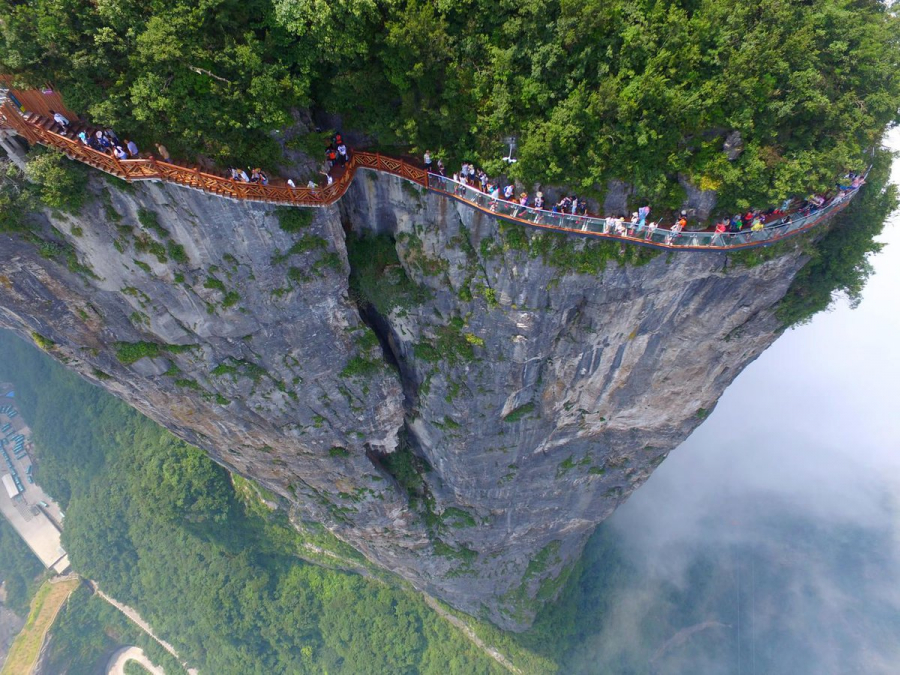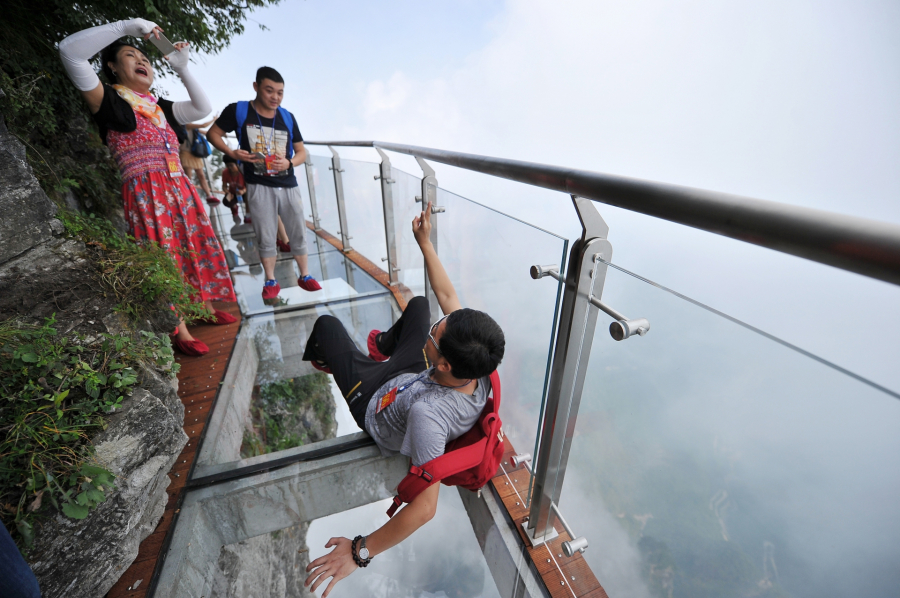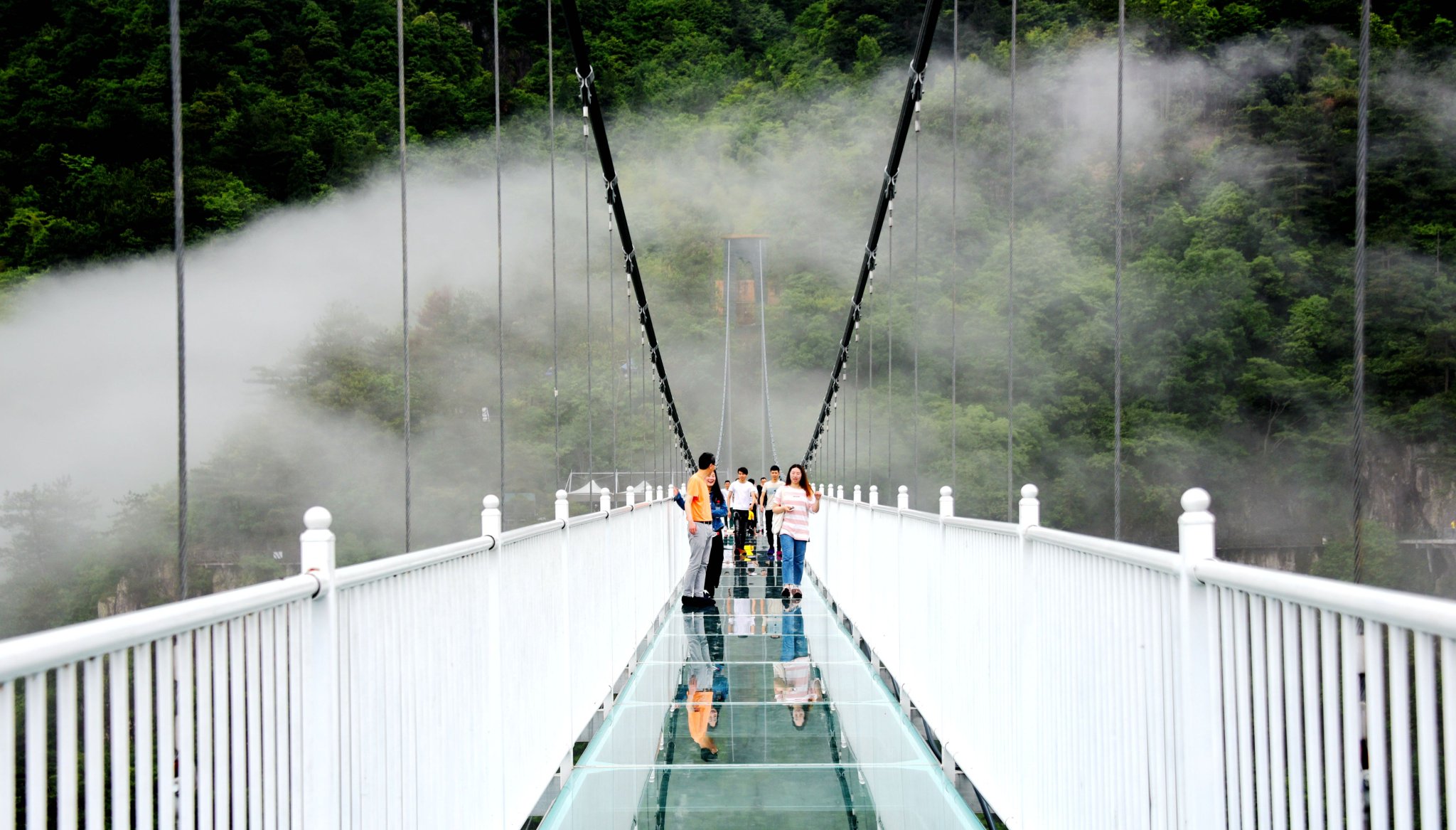Thirty-two glass bridges, walkways and observation decks at 24 scenic spots in northern Hebei Province have been shut down since March last year. The world's longest glass suspension bridge, the 488-meter Hongyagu, was also included in the list, despite opening just two years ago. The move has affected not only the province's tourist areas, but also similar attractions elsewhere in China.

Glass bridges have become very popular in China in recent years, attracting a large number of domestic and foreign tourists, and are considered a boost for tourism in many localities because of their novelty and the excitement of tourists. The number of newly built glass structures has also increased sharply in the past two years. China currently has about 2,300 glass bridges along with glass walkways and slides. However, in many areas, the structures have quality problems that have led to fatal accidents for tourists. The closure of glass bridges comes after a series of accidents.
In 2015, a glass-bottomed walkway attached to a mountainside in China's Henan province cracked after tourists walked across it. The 0.91-meter-high walkway was subsequently closed for repairs. The following year, a tourist was injured by falling rocks while walking on the world's highest glass-bottomed bridge in Zhangjiajie, Hunan province. The famous bridge was closed for maintenance less than two weeks after it opened due to overcrowding. In 2017, a person died in an accident on a glass slide at the Mulan Shengtian scenic area in Hubei province. This year, another accident occurred at a scenic area in the Guangxi Zhuang Autonomous Region, resulting in one death and six injuries.


In response to the proliferation of glass bridges being built without ensuring safety standards, the Chinese government has called on authorities to conduct comprehensive inspections of all glass structures across the country.























(Copy).jpg.jpg)



(Copy).jpg.jpg)






